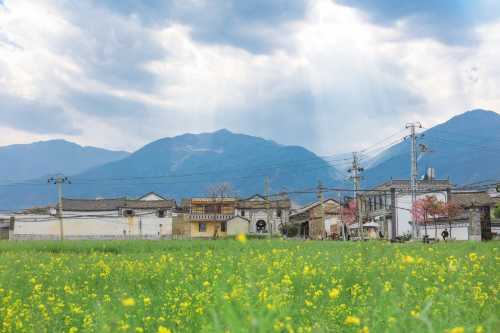Popular Trip Moments
Dare to uncover the mysterious legends by Erhai Lake? | Sanse Yunhe: Seaside Whispers in Shuanglang's Best Location | A Guide to A'kai'tiya An Hidden Green Mountain Hotel: Live in the Poetry of Erhai Lake | Dali: This time, I checked into a landscape of clouds | Discover This Hidden Gem Villa by Erhai Lake - Simply Amazing! | Don't miss out when visiting Dali! I thoroughly enjoyed a spring "sunbath" here. | A Paradise by Erhai Lake: Complete Guide to Erhai Jianglv Miwan | Dali Hotel Recommendation | An Artistic Haven Between Cangshan Mountain and Erhai Lake | Pink Paradise in Dali Ancient Town | Once you've stayed at a seaside B&B by Erhai Lake in Dali, you'll fall in love with it! | Encounter the Poetry and Distance of Erhai Lake | 3See・Twilight Diary Seaview Hotel | Dali Naliya: Experience the Romance of Erhai Lake and Unlock a Tie-Dye Journey | Dali Naliya: A Dreamy Rendezvous with the Sky Mirror and Seaside Lawn | Come to Dali for a soul-healing experience! | Dali in the off-season is simply an ideal destination! | Dali: Stay Among the Clouds and Enjoy Breathtaking Sea Views!!!!! | [China, Dali] Recommended tourist spot: Chongsheng Temple Three Pagodas | Per Capita 100+! Stay in the Aesthetic Secret Realm of Wabi-Sabi in Dali! | I don't know if you like this kind of French-style homestay, but I'm crazy about it. | Dali Bai Autonomous Prefecture, Yunnan | [Fairy B&B by the Erhai Lake in Dali|Living in an oil painting is the right way to welcome spring🌸] | My bestie raved about the Shuanglang Luna Hotel in Dali! It's worth every penny! | Help! I could live at this amazing homestay in Dali forever. | Dali Mingyue Songjian Erhai Hotel: A dreamy retreat by Erhai Lake | This Hotel in Dali Will Heal You | Dali: The ultimate alternative to "Little Kamakura" | Lost in the Beauty of Yunnan: From Ancient Towns to Snowy Peaks! ❄🏯🌿 | Stay at your dream hotel by Erhai Lake! | Erhai Lake Waterfront Hotel|The blues moment that you will always love. | For this window, I have returned to Dali countless times.
Recommended Attractions at Popular Destinations
Bangkok attraction near me | Manila attraction near me | Tokyo attraction near me | Taipei attraction near me | Hong Kong attraction near me | Seoul attraction near me | Kuala Lumpur attraction near me | Los Angeles attraction near me | Shanghai attraction near me | New York attraction near me | Shenzhen attraction near me | Osaka attraction near me | Singapore attraction near me | London attraction near me | Guangzhou attraction near me | San Francisco attraction near me | Beijing attraction near me | Macau attraction near me | Bali attraction near me | Jakarta attraction near me | Paris attraction near me | Ho Chi Minh City attraction near me | Istanbul attraction near me | Phuket attraction near me | Chicago attraction near me | Seattle attraction near me | Toronto attraction near me | Orlando attraction near me | Cebu attraction near me | Chiang Mai attraction near me
Popular Restaurants in Dali
Fireplace Image Wild Mushroom Courtyard Hot Pot | Wozai Dali Dengni | 双廊转角食光·云南菜·花园餐厅 | Ruoshui 3000 Restaurant | Moshanghuayuan Restaurant | Linden Centre | Er Yue Restaurant | 红利私厨•白族私房菜(玉洱路老店) | Green Field Kitchen | 格外小馆(双廊店) | 醉琉璃·藏好私房菜 | 丽舍咖啡吧 | 四方街食店 | Those flowers, Dali cuisine, wild mushroom hot pot (Gucheng Shop) | 老宅子私房菜馆(大理古城店) | ba mu xuan | 正宗保山铜瓢牛肉(五台路店) | 大理悦湾·VILLA半山海景酒店·咖啡厅 | 香村老汉木桶鱼.酸菜鱼(开发区火车站店) | Duan Gongzi's Dali Bai Ethnic Cultural Experience Restaurant | Royal Restaurant | Baizufengweiguan (dafei) | 留白LIUBAI·菡萏驿海景度假酒店·留白Villa·菡萏驿海景餐厅(双廊店) | Ting Yuan· Private Kitchen | 复兴小院·私房菜(古城店) | 凤翔饭庄·洱海畔的味道 | FORTEN | 四季云野·养生野生菌·酸菜牛肉火锅(双廊店) | Jinshan GuYuan Restaurant | Fly Me To The Moon
Popular Ranked Lists
Top 9 Best Things to Do in Turpan | Popular Premium Hotels in Central Saanich | Top 10 Best Things to Do in Xuancheng | Top 20 Local Restaurants in Zurich | Top 6 Local Restaurants in Semporna | Top 9 Local Restaurants in Pingyao | Popular Premium Hotels Near Bintulu Division | Popular Premium Hotels in Mudurnu | Popular Local Restaurants in Hong Kong | Top 3 Best Things to Do in Yuyao | Popular Luxury Hotels Near Takeo | Popular Premium Hotels in Thap Put | Top 4 Best Things to Do in Jiangmen | Top 5 Best Things to Do in Huludao | Top 19 Local Restaurants in Nara | Popular Luxury Hotels Near Sandakan | Popular Best Things to Do in Shannan | Popular Luxury Hotels Near Bridgewater | Popular Luxury Hotels Near Goslar | Top 3 Best Things to Do in Jiamusi | Top 20 Local Restaurants in Zhengzhou | Popular Premium Hotels in Grad Korcula | Popular Best Things to Do in Tongdao | Top 15 Local Restaurants in Taipei | Popular Premium Hotels in Maggona | Top 4 Best Things to Do in Xingyi | Popular Luxury Hotels Near Sandakan Division | Popular Best Things to Do in Heyuan | Top 5 Best Things to Do in Altay Prefecture | Top 20 Local Restaurants in Lijiang
Payment Methods
Our Partners
Copyright © 2025 Trip.com Travel Singapore Pte. Ltd. All rights reserved
Site Operator: Trip.com Travel Singapore Pte. Ltd.
Site Operator: Trip.com Travel Singapore Pte. Ltd.









